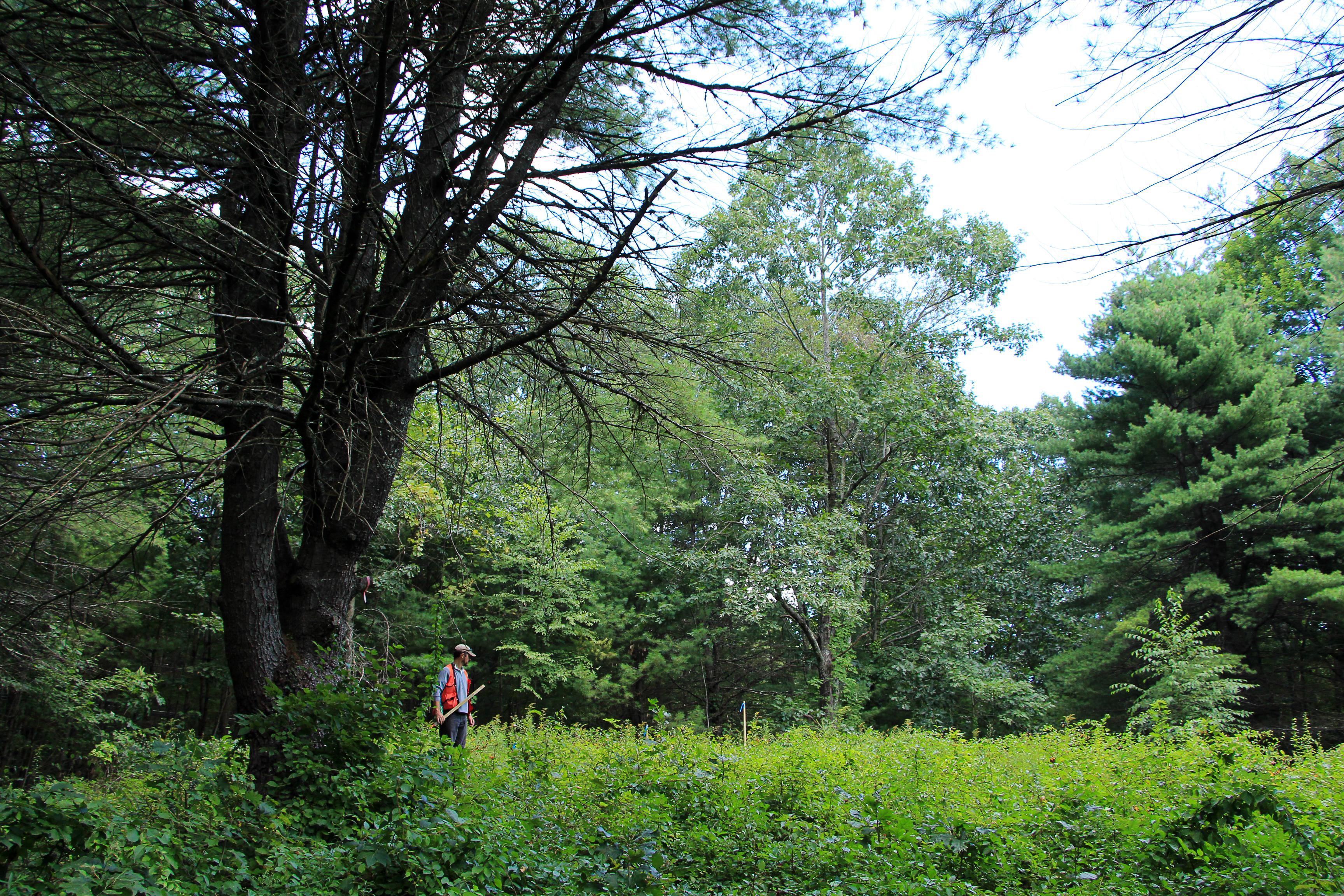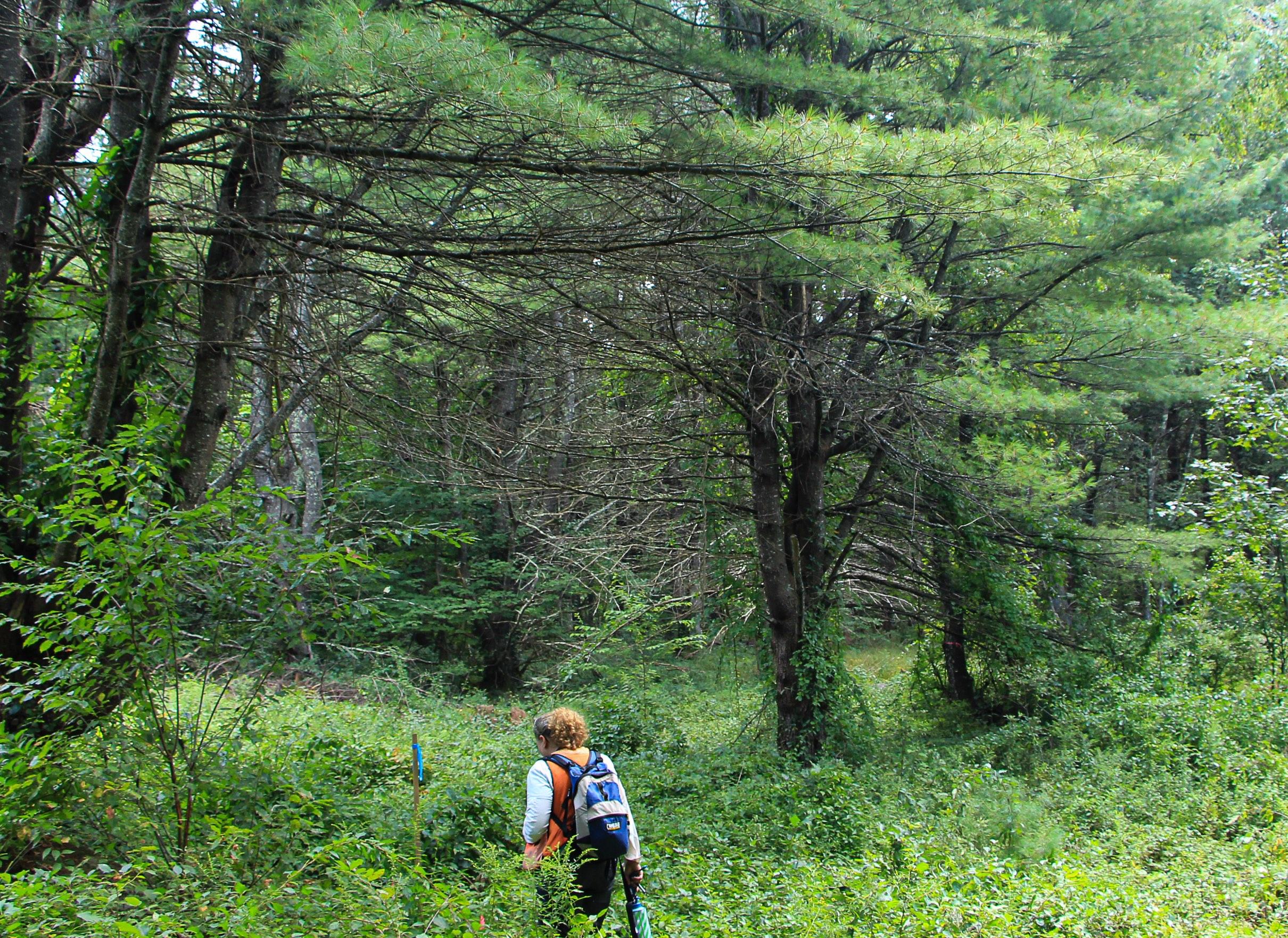
The Forest Society’s Gardner Forest in Hollis is a 15-acre plot of white pines, historic farm stone walls, and thickets of low bush blueberries, all alongside Hollis’ lilypad-covered Dunklee Pond. The protected land is also home to an increasingly rare species of milkweed to the state of NH: butterfly milkweed (Asclepias tuberosa), that Forest Society foresters have been monitoring for the past two decades.
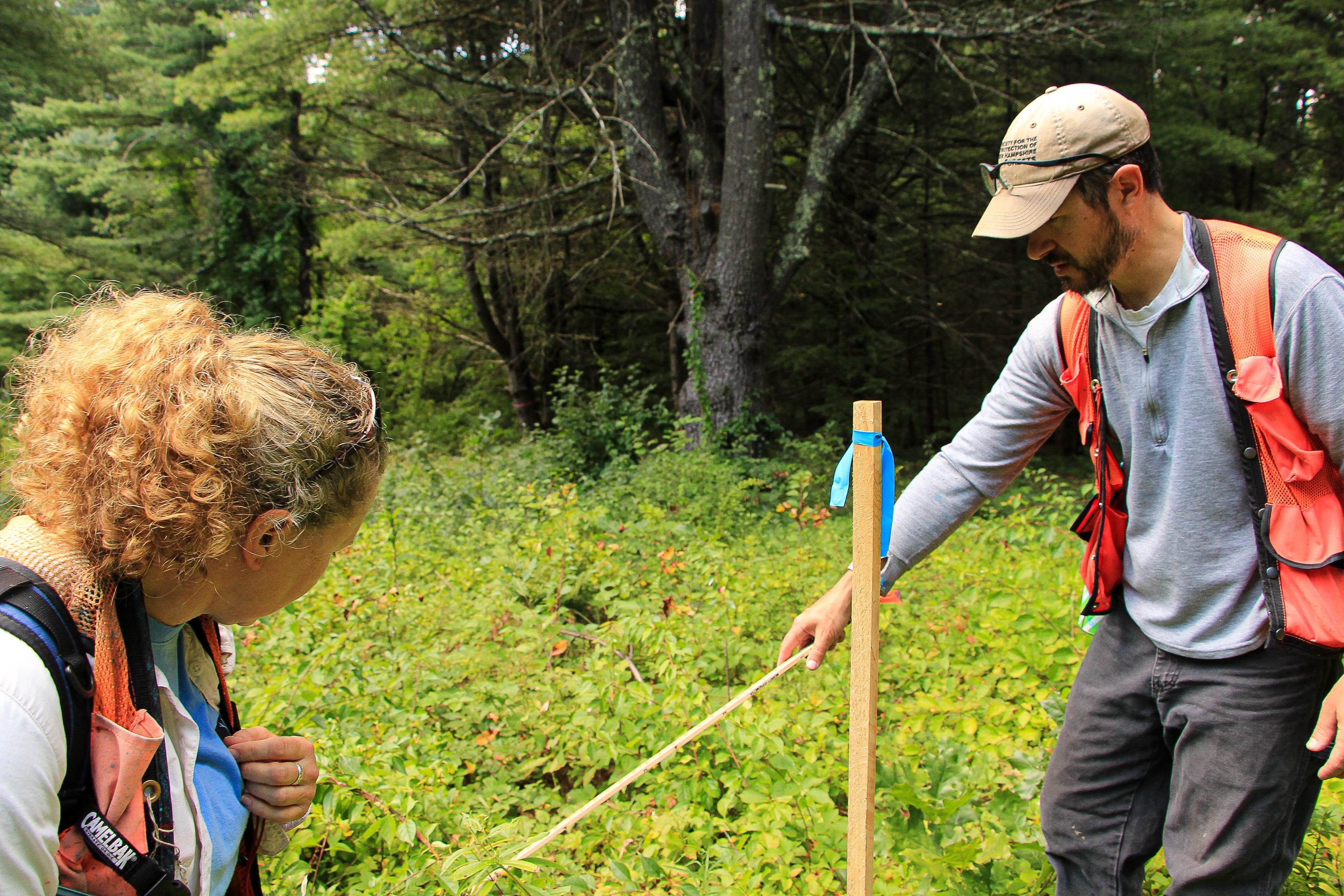
Butterfly milkweed, so named for the colorful winged insects it attracts, looks like a daintier version of its common cousin, with long and slender leaves in an alternating pattern around a thin stem. In the spring, it sprouts clusters of bright orange and red blossoms, and in late summer and early fall it develops long, pointed seed pods that extend upward from the stem, covered in tiny hairs.
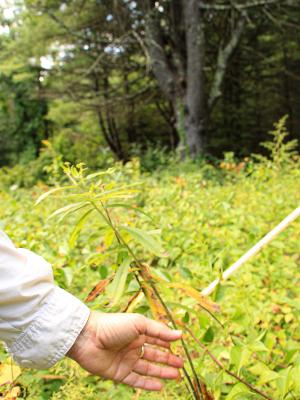
Butterfly milkweed (alternative names include orange milkweed or chigger weed) has many medicinal uses and was eaten by the Omaha and Ponca indigenous tribes to treat bronchial and pulmonary aliments. It is also an attractive plant species for pollinators, including bees, butterflies and various beetles.
The plant is actually pretty common nationwide, there are even populations in our neighboring state of Massachusetts. But New Hampshire is at the northern border of its range, and only nine populations exist in the state, including the one at the Gardner Forest.
When Forest Society foresters first discovered the plant on the property in 2009, 28 individual milkweed plants were growing beneath the pines in the Gardner Forest. In 2016, that number dropped to 16 plants. Then again in 2020, it had decreased to nine.
This steady decline in the plant’s population encouraged the Forest Society to take action towards managing the property to help the butterfly milkweed improve its growth. In 2009, the plot where the plants were growing was heavily shaded by large white pines, providing very few growth opportunities for plants on the forest floor. So, in 2021 when it was clear the population was at risk, on the recommendation of an ecologist, the forestry team carefully removed a small cluster of trees to open up the canopy and provide full sun access for the milkweed.
And that harvest has helped!
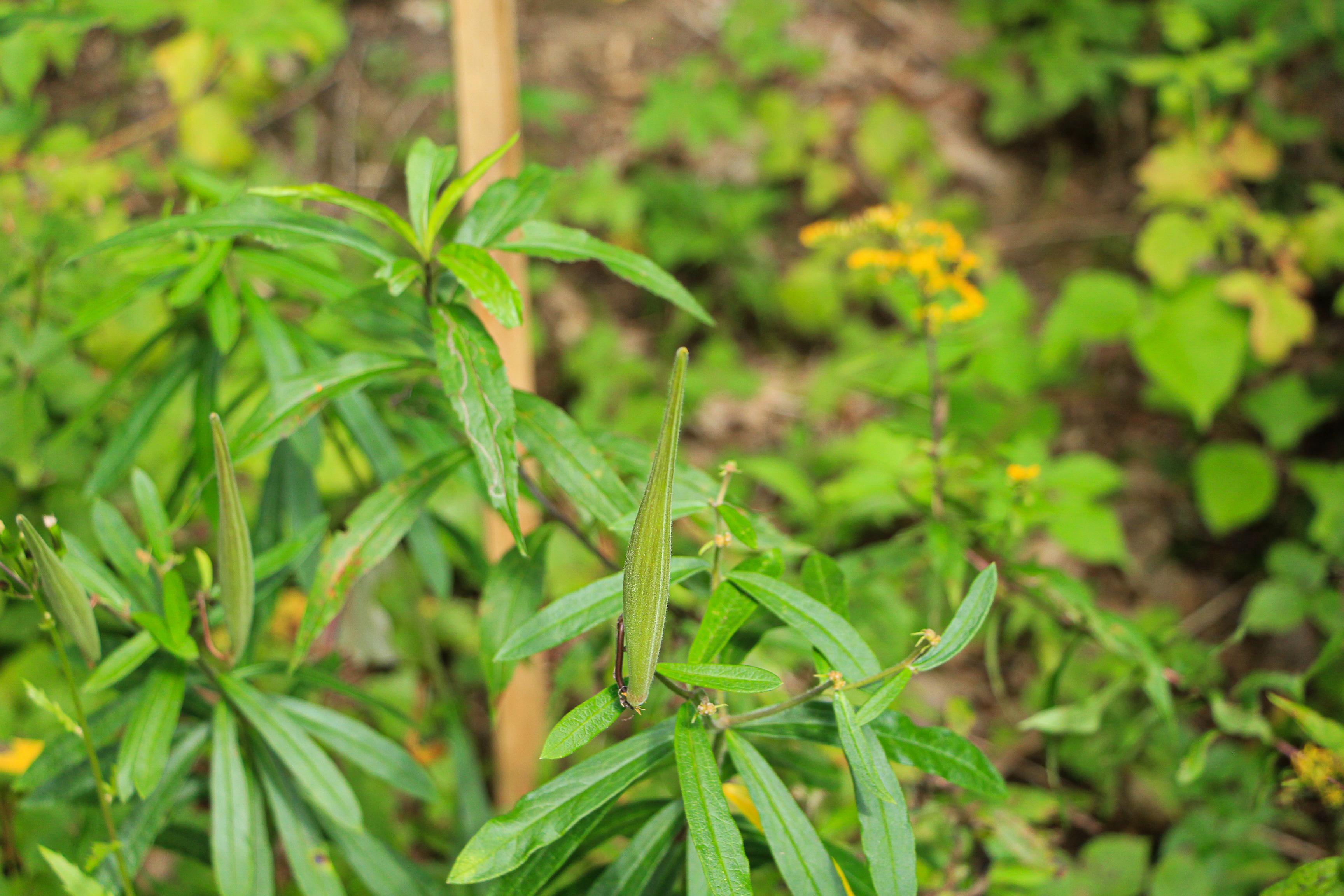
During our visit to the forest, we counted 14 milkweed plants growing in the clearing. Plus, many of the plants had started growing seed pods which they hadn’t shown signs of doing in all their years of monitoring.
And now, it’s time for the next step. To further help the plants expand their population, Forest Society foresters are going to take down a few more large pines to further open the canopy and expose the clearing to full sunlight. In order to ensure the safety of the plant, foresters have staked each clump of milkweed with bright blue flagging, as well as enlisted the help of a specially trained forester to carefully remove the trees while protecting the rare plant.
Once the clearing has been widened, mowing of the area will begin in the fall, to prevent the spread of invasives that could hinder the milkweed’s growth.
There is a concern that the harvest could affect the plants, but as the Forest Society’s managing forester, Wendy Weisiger, puts it, “If we do nothing, we’re going to lose it. If we do something we might still lose it, but we have more of a chance of helping.”
